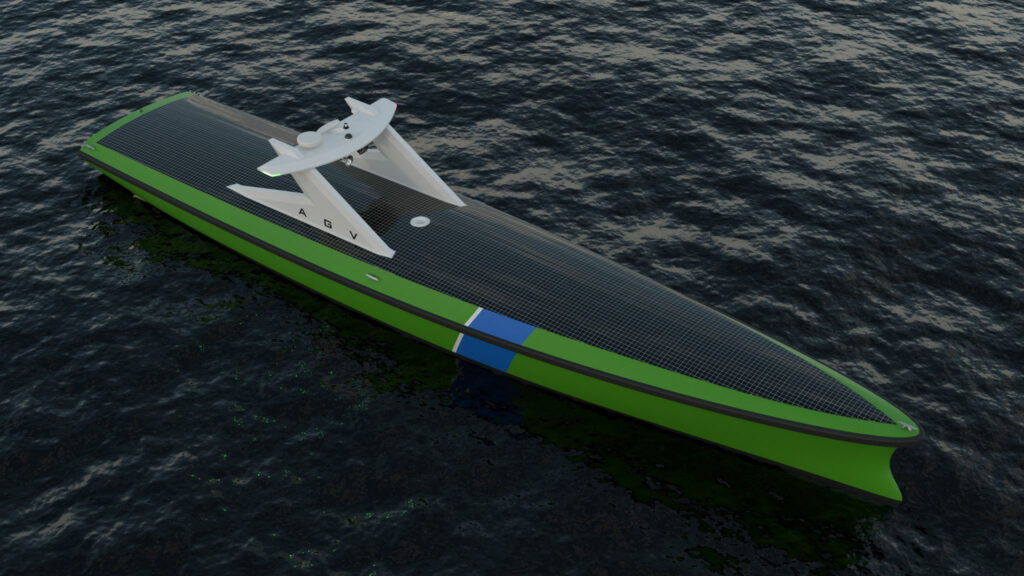
A consortium comprising C-Job Naval Architects, LISA, SeaZip Offshore Service, Sea Machines, MARIN, and eL-Tec elektrotechnologie has unveiled a concept design for an Autonomous Guard Vessel (AGV), to be used for surveillance of offshore wind infrastructure, from wind farms to substation platforms and cable routes.
The vessel, whose design was introduced on 7 July, is said to have low operating costs, since it requires no crew on board, as well as low carbon emissions, as it incorporates environmentally friendly propulsion solutions.
Given that the accommodation facilities are eliminated, the vessel is considerably smaller than the existing guard vessels, which leads to lower propulsion requirements and for the vessel to be powered by batteries. This altogether results in lower operating costs, according to the consortium behind the project.
“[The] ship has solar panels across the top which allows for the continuation of navigation and communications in case the batteries run out of power”, said Rolph Hijdra, Autonomous Research Lead at C-Job Naval Architects.
Source: C-Job Naval Architects
“Contrary to current guard vessels, the AGV will continue to be operational even with rough sea conditions and have minimal underwater noise owing to the smaller size, reduced propulsion requirements and absence of a diesel engine”, Rolph Hijdra said.
The vessel will recharge its batteries at a charging station, which can be moored independently, or connected to an existing equipment onsite. Charging could be done either via a cable connection to the on-site equipment such as an offshore transformer platform, or locally generated using renewable fuels, according to the project consortium.
“The Autonomous Guard Vessels will be constantly patrolling the area and take turns recharging. One fully charged AGV will remain on stand-by supporting operations if a situation arises”, said Harm Mulder, Operations Manager at SeaZip Offshore Service.
The AGV will carry out its tasks by continuously monitoring nearby marine traffic visually, via radar, and through AIS data. With any vessel that approaches the offshore area the AGV is securing, established measures will be taken to avoid collisions and damage to the offshore infrastructure.
“An intruding vessel can be communicated with and will receive information on how to safely navigate the area as well as being physically escorted away from the site by the Autonomous Guard Vessel. Additionally, the encounter will be recorded to provide video footage in case of any violation or accident”, the project consortium states.
The post Battery-powered, autonomous offshore wind guard vessel introduced appeared first on Offshore Energy.
Source: LNG World News
